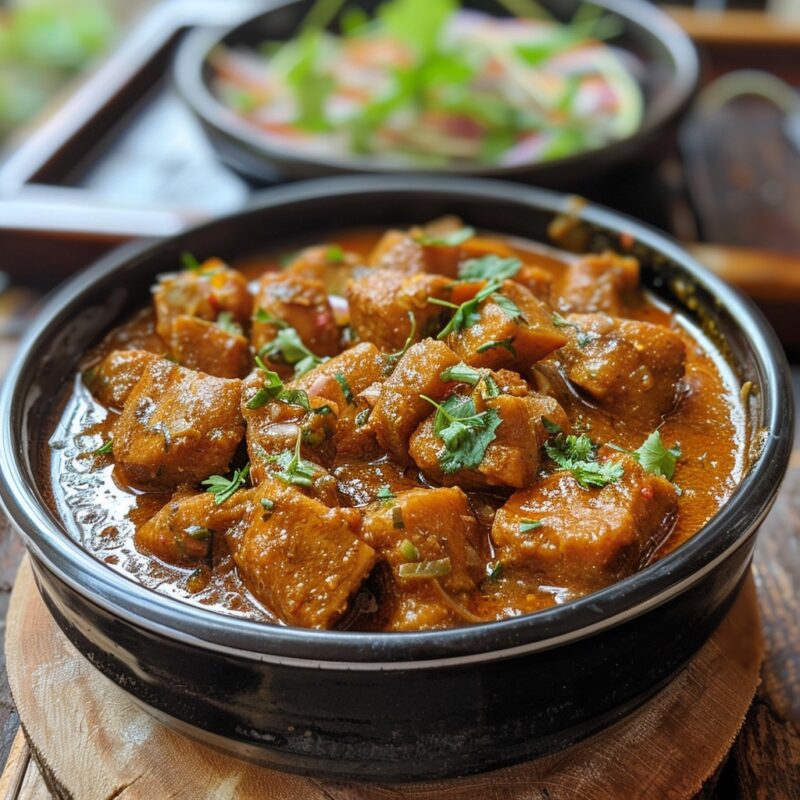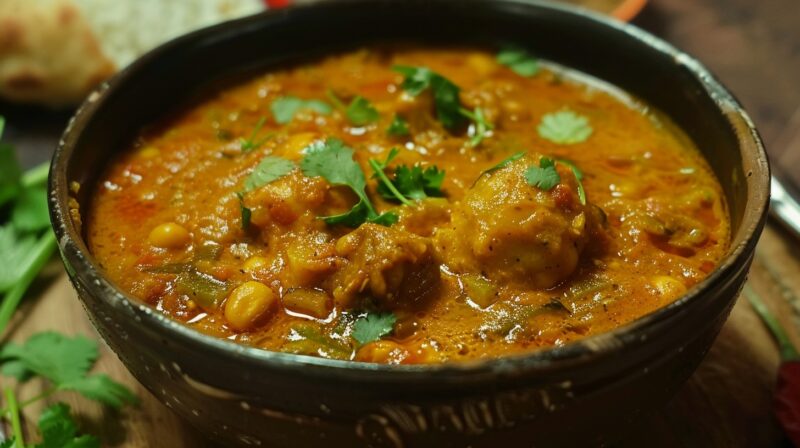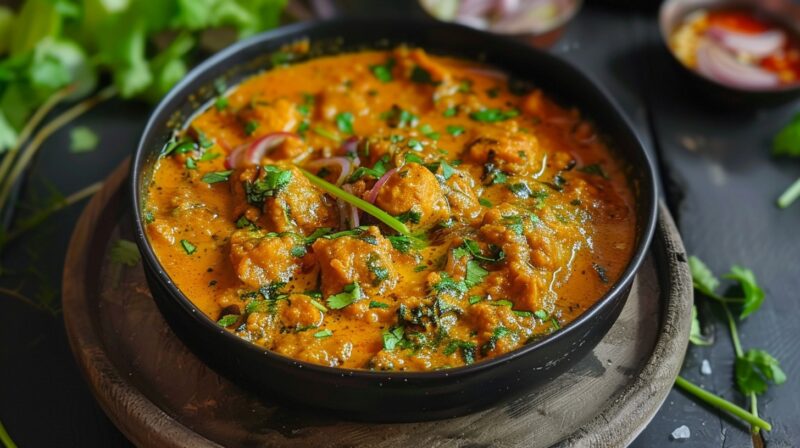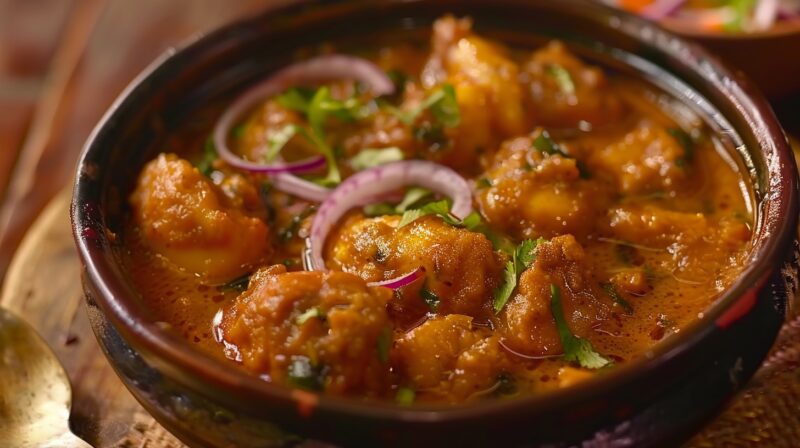Learn how to make soya chaap curry at home. Soya Chaap Curry is one of the yummiest Indian curry recipes for vegetarians, serving as a fantastic replacement for non-veg dishes.
The homemade soya chaap recipe is simple to make yet incredibly tasty, providing a rich and flavorful meal.
Ingredients
- Soyabean Chaap: 250 grams
- Chopped Onions: 250 grams (1 bowl)
- Chopped Tomatoes / Tomato Puree: 250 grams (1 bowl)
- Chopped Ginger Garlic: 2 teaspoons
- Homemade Cream / Malai: 100 grams (1 small cup)
- Salt, Red Chili Powder, Turmeric Powder, Garam Masala: As per taste
- Fresh Coriander: For Garnishing

Step 1: Prepare the Chaap
- Heat Oil:
- Heat oil in a kadai (deep frying pan) on medium flame.
- Saute Chaap:
- Add the soya chaap pieces and sauté them until they are golden brown on all sides.
- Alternatively, you can deep fry the chaap pieces for a crispier texture.
- Set Aside
- Remove the cooked chaap pieces from the kadai and set them aside.
Step 2: Prepare the Masala
- Saute Ginger Garlic:
- In the same kadai, heat 1 teaspoon of oil.
- Add the chopped ginger and garlic, and sauté until they turn brown.
- Add Onions:
- Add the chopped onions and sauté them until they are well-browned, which should take about 10 minutes.
- Properly browning the onions is crucial for the flavor.
- Add Tomatoes and Spices:
- Add the chopped tomatoes or tomato puree along with salt, red chili powder, turmeric powder, and garam masala.
- Cook the masala for 10 minutes until the oil starts to separate from the mixture.
- Add Cream:
- Add the homemade cream or malai to the masala to bring richness to the gravy.
- Cook the mixture on low flame for another 10-15 minutes, allowing the flavors to meld together.
Step 3: Combine and Cook

- Add Water:
- Once the masala is cooked properly, add water to achieve the desired consistency of the curry.
- Allow the water to come to a boil.
- Add Chaap:
- Add the sautéed chaap pieces to the boiling water.
- Cover the kadai and let it cook on medium flame for 10-15 minutes until the curry thickens.
Step 4: Garnish and Serve
- Garnish:
- Once the curry is ready, garnish it with a sprinkle of garam masala and fresh coriander leaves.
- Serve Hot:
- Serve the hot soya chaap curry with naan, roti, or rice for a delightful meal.
Tips for Making the Perfect Soya Chaap Curry

Now I would like to share some tips to help you make a perfect soya chaap curry.
- Oil Choice:
- Use a neutral oil like vegetable oil for sautéing, but you can also use ghee for a richer flavor.
- Cream/Malai:
- Homemade cream adds a natural richness, but you can substitute with store-bought cream if necessary.
- Adjust Spices:
- Customize the level of spices according to your taste preference. Add more or less chili powder depending on how spicy you like your curry.
- Freshness:
- Use fresh ingredients for the best flavor, especially fresh coriander for garnishing.
Nutritional Benefits
Soya chaap curry is not only a delicious dish but also offers a multitude of nutritional benefits. Here’s a look at why this vegetarian meal is a fantastic addition to your diet:
| Nutritional Benefit | Details |
|---|---|
| High in Plant-Based Protein | Great source of plant-based protein, ideal for vegetarians and vegans. |
| Rich in Essential Amino Acids | Contains all nine essential amino acids. |
| Packed with Vitamins and Minerals | Rich in vitamins B6, K, and C. Contains iron, calcium, magnesium, and potassium. |
| High Fiber Content | Includes dietary fiber from fresh vegetables, aiding digestion and weight management. |
| Low in Saturated Fat | Low in saturated fat, promoting heart health. |
| Boosts Antioxidant Intake | Rich in antioxidants from spices and vegetables, protecting against oxidative stress. |
| Supports Immune System | Boosts the immune system with vitamins, minerals, and antioxidants. |
| Bone Health | Contains calcium, magnesium, and Vitamin K for strong bones. |
If you’re more up for something non-vegan and fast, in only 10 minutes you can make the Dal Khichdi look and taste as it came from a restaurant.

